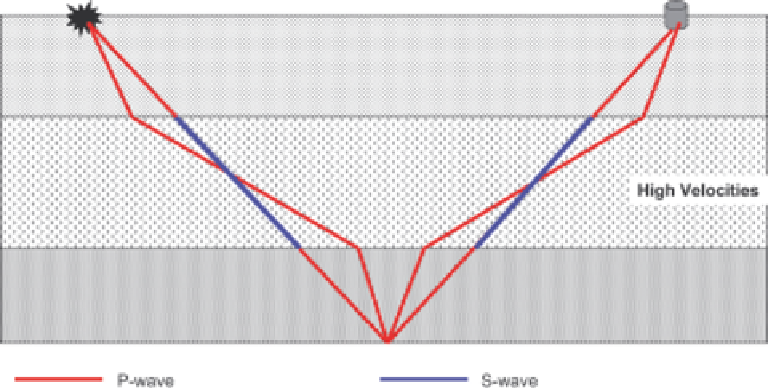Geoscience Reference
In-Depth Information
Fig. 2.13
The simple geometry of converted modes through high-velocity layers. The diagram
shows the potential benefit of a double converted ray-path. The high-velocity layer leads to a large
amount of ray-bending for the P-wave ray-path and a lack of angular coverage at depth. The
ray-path that contains the P to S conversion through the high-velocity layer is much simpler and
gives larger angular coverage at the target. In practice, it is very difficult to separate out such double
conversions because of their low amplitudes and similarity in velocity to multiples.
Fig. 2.14
Conventional marine shear wave geometry. Gas-saturated sediments are very disruptive
to the passage of P-wave energy. The P-wave reflection will therefore be weak and highly scattered.
On the other hand, the reflected S-waves are not affected by the presence of gas and travel through
undisturbed. The shear wave data are recorded at the seabed to avoid energy loss at a second
conversion back to P-wave.



